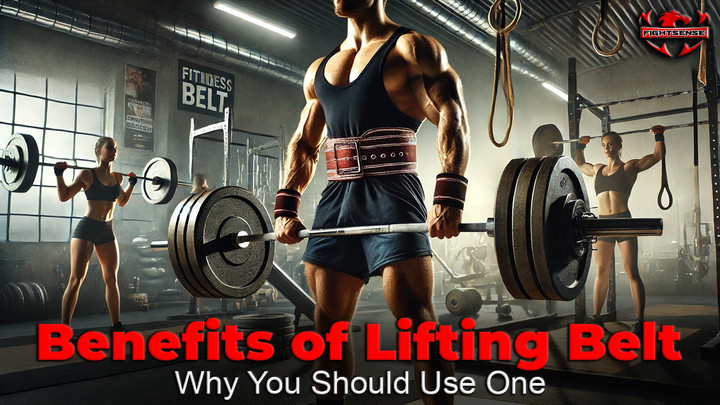Benefits of Lifting Belt: Why You Should Use One
18th Mar 2025
Key Highlights
-
One advantage of a lifting belt is improved core stability and injury prevention.
-
Belt weights assist with posture and spinal protection.
-
Benefits go beyond powerlifting into general strength training.
-
A lifting belt raises confidence and lifting effectiveness.
-
Maximizing efficacy depends on correct use.
Define a lifting belt here.
Designed to assist the lower back and core during heavy lifting, a lifting belt is a specific piece of exercise equipment. Usually composed of either leather or nylon, it compresses the waist and helps to raise intra-abdominal pressure. This extra help lowers the chance of injury and lets one accomplish complicated motions with improved posture and stability.
A lifting belt offers what advantages?
More than just a tool, a weightlifting belt is undoubtedly vital for strength training. This is why it's crucial:
1. Improves Fundamental Stability
An elevation of intra-abdominal pressure (IAP) is one of the main advantages of a lifting belt. This pressure keeps your spine and core stable, reducing your risk of injury when lifting heavy weights.
2. Relieves Spinal Stress
Your lower back becomes somewhat stressed when lifting large objects. By helping to equally distribute pressure, a weightlifting belt lessens lumbar spine strain and lowers back injury risk.
3. Increases lifting performance
By improving force transfer, a belt can help optimize performance. More effective motions and higher power output resulting from this enable lifters to push beyond their comfort zones
In weightlifting, technique is essential; a belt keeps a neutral spine and reduces too much back arching. This helps create more productive and safer workouts.
5. Generates mental confidence
Understanding that your spine and core have more support gives you psychological lift. This extra confidence helps lifters to manage higher loads more easily and enhances general lifting performance.
Does a lifting belt help prevent injuries?
The correct use and fit of a lifting belt can greatly help prevent injuries. Increasing core stability and lowering spinal compression helps a belt minimize lower back problems.
On the other hand, depending too much on a belt without appropriate technique could result in bad form and higher injury risk. Using the belt as a supplemental tool is crucial; it should not replace appropriate training and development of core strength.
Weightlifting Belt Advantages for Various Exercises
Deadlifts and squat calls
-
Keeps the lower back steady.
-
Stops too much forward bending
-
It improves core engagement and posture.
Press & Clean overhead, then jerk
-
It provides basic stability to prevent over-arching.
-
Improves equilibrium during big lifts
Training for Strongman & Powerlifting
-
This allows one to lift heavier weights more effectively.
Correcting Use of a Weightlifting Belt
Use these guidelines to optimize the weightlifting belt advantages:
-
Position It Right: Around your core, place the belt covering the abs and lower back.
-
Tighten Without Restriction: It should be stiff but not so tight as to prevent breathing.
-
Engage Your Core: Before raising, take a deep breath and press your abs against the belt.
Shop Now !
Conclusion
A lifting belt has advantages beyond only allowing one to raise more weight. From enhancing performance to increasing stability and lowering spinal stress, a belt is a great tool for any lifter who takes seriously Adding a belt to your regimen could change your routine whether your goals are injury prevention or increasing your lifting confidence.
Disclaimer:
This blog is just for informational needs. See a fitness professional before altering your lifting program.

